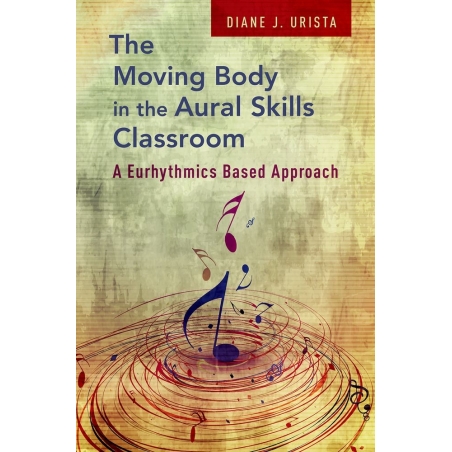The Moving Body in the Aural Skills Classroom-influenced by Dalcroze-Eurhythmics-is a practical guide for college instructors and students interested in integrating the moving body into the aural skills classroom.
CONTENTS
Introduction
I. Purpose
Why the Moving Body in the Aural Skills Classroom?
Healing the Mind-Body Split in College Music Training
Rhythms from the Body
What is the Kinesthetic Sense or Sixth Sense?
Traditional vs. Embodied Approach
Musical Affect and Expressive Performance
II. Methodology
Experience before Analysis
Spiral of Learning
Sensation before Conceptualization
Internalization and Automatisms
Improvisation: Cultivating One's Voice
Physiological Evidence
Reflective Stillness: Movement is Not an End in Itself
III. Getting Started (Notes to the Instructor)
Pedagogical Tips
Chapter 1: Basics
I. Preliminary Considerations
Physical Form (to the instructor)
Movement Tenets (to the instructor and students)
Overcoming Inhibitions (to the instructor)
II. Five Fundamental Exercises (to the instructor and students)
Quick Reaction
Inhibition and Excitation
Interference
Imitation and Canon
Disassociation
Chapter 2: Warm ups
Chapter 3: Rhythm
I: Basic Rhythmic Concepts and Terminology (to the instructor and students)
Time-Point vs. Gestural-Rhythm
Beat
Meter
Rhythmic Nuance
Definitions of Accents and Poetic Feet
Expressing Gestural Rhythms
Pedagogical Tips for Teaching Rhythm Exercises (to the instructor)
II: Rhythmic Subjects
1. Beat, Pulse, & Tempo
2. Meter-Simple and Compound
3. Augmentation-Rhythmic Duration and Expansion
4. Subdivision in Simple and Compound Meters
5. Rests & Pauses-The Expression of Silence
6. Dotted Rhythm
7. Syncopation
8. Gestural Rhythmic Patterns
9. Cross Rhythms and Polyrhythms
10. Changing Meters
11. Uneven Meters
12. Additive Rhythms
13. Polymeters and Cross Rhythms
Chapter 4: Pitch, Scale, and Melody
1. The Scale-to and from tonic
2. Tonal Centering, Retention, and Recall
3. Relative Pitch & Scale Degree Function
4. Scalar Fragments-The Scale's Inner workings
5. Intervals-A Contextualized Approach
6. C-to-C Scales-A Comparative Study of Scales
7. Modulation-Strategies for Singing, Hearing, and Improvising
8. Sight Singing and Inner Hearing Strategies
Chapter 5: Harmony
1. Chords-Harmonic Building Blocks from the Scale
2. Inversions-Triads and Seventh Chords
3. Embodying Harmonic Function
4. Modulation
5. Embodying/Integrating Harmonic Progressions
Chapter 6
1. Phrase
2. Forms
3. Plastique Animee
Additional Plastique Animee


